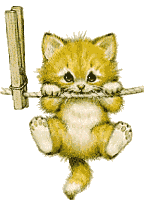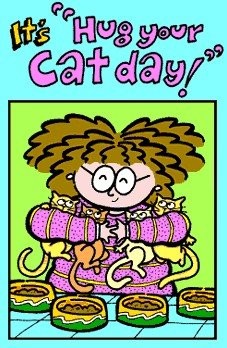Mimi's note: This isn't a cute story. Nothing adorable this time BUT very, very relevant and important. China sells dogs and cats at their outside meat markets. They serve up dogs and cats in the restaurants. I am not going to get into their treatment, on the whole, of animals which is abhorrent; however, to read that they are taking one of their national treasures and treating the species so horribly makes me cry, literally.
I don't want to hear arguments about 'it is their culture'. Here in the US we used to have slaves and we used to burn witches and we used to hang people - culture can change for the better or - ignorance can stop cultural practices from changing right in their tracks.
We need to bring light to the Chinese 'culture atrocities' that assail the senses of most civilized nations. China wanted to join us with respect to trade and industrialization - they had better not whine about the rest of the world seeing them as barbarian. After all, they invited us in and we were astounded at what we found. If China wants trade and money from the rest of the civilized world then they - all of them - need to 'man up' and face the music. Quite frankly, China is playing a tune that makes me vomit.
God help the Pandas if some farmer starts the rumor that eating Panda meat grows hair.
BEIJING — Eleven rare Siberian tigers have died at a wildlife park in a startling case that activists say hints at unsavory practices among some zoos and animal farms in China: They are overbreeding endangered animals in the hopes of making illicit profit on their carcasses.
The deaths of the tigers occurred in the past three months at the zoo in China's frigid northeast, officials and state media said Friday. Reports said the tigers starved to death, having been fed nothing but chicken bones, while a zoo manager said unspecified diseases killed the animals.
Either way, the animals had been ill-kept and ill-fed. The Shenyang Forest Wild Animal Zoo has struggled financially, even withholding pay from staff, said a woman in charge of corporate planning for the zoo who would only give her surname, Wang. The zoo had been up for auction for some time without any bidders, she said.
"You can do the math: one tiger eats 10 kilograms (22 pounds) of beef per day and there are at least 30 of them now, and there are lions, elephants and other animals too," Wang said. "The zoo has been taking money from the staffers' salaries to feed the animals."
The food bill for the tigers ran to about $1,320 (9,000 yuan) a day – nearly half the food allowance the zoo gets from the local government to care for all the animals, Wang said.
The deaths underscore conflicting signals in China's attempts to save its dwindling number of tigers. While extensive conservation efforts are under way, animal protection groups say zoos and wildlife parks may be deliberately breeding more animals than they can afford, hoping to sell off the carcasses onto a black market where tiger parts fetch a high price for use in traditional medicines and liquor.
"We've seen cases where tiger farms have steeped the bones from their deceased tigers in liquor to sell to visitors," said Hua Ning, project director for the China branch of the International Fund for Animal Welfare.
Other animal rights groups like the Washington, D.C.-based National Fish and Wildlife Foundation have documented stockpiled pelts and the sale of tiger wine at the Xiongsen Bear and Tiger Mountain village in south China's Guangxi region.
Hua said she didn't have any specific information about illicit sales of tiger parts by the Shenyang zoo but she and other activists said Chinese tiger farms in particular were breeding too aggressively.
"Some of these farms are raising the tigers precisely because they hope that there will be some relaxation of the ban on tiger parts and they can sell the parts and derivatives," Hua said.
Tiger parts are still available on the black market as well, probably sourced from farms or zoos since there are so few wild tigers left in China, she said.
Siberian tigers are one of the world's rarest species, with an estimated 300 left in the wild, 50 in China. But more than 5,000 are held captive on farms and wildlife parks across China.
Xie Yan, China director for the New York-based Wildlife Conservation Society, said she expects the overbreeding of captive tigers in China to come up at a meeting of signatories to CITES – the Convention on International Trade in Endangered Species – that begins Saturday in Doha, Qatar.
Xie's group wants China to make animal sanctuaries use birth control to "reduce the number of tigers in captivity to make sure they are well-treated."
The goal should be to boost China's wild Siberian tiger population and restore habitats that have been destroyed by industrialization, she said.
The Shenyang Forest Wild Animal Zoo, where the latest deaths occurred, is a long-troubled tourist spot also known as the Glacier Animal Zoo. In November 2007, three tigers killed a fourth during a fight over food. At the end of last year, two hungry tigers there were shot and killed by police after they mauled a zookeeper.
In the latest deaths, the state-run China Daily newspaper quoted Liu Xiaoqiang of the Shenyang Wild Animal Protection Station as saying that the tigers had been kept in cold, cramped metal cages and were fed nothing but chicken bones.
Zoo spokesman Wu Xi said, however, that the animals died from "various diseases" that were hard for them to endure because of this year's unusually harsh winter. He said the tigers were kept in cages indoors because of the bitter cold.
Wu wouldn't specify what diseases the animals had. He said 30 tigers now remain at the zoo but some remain at risk of illness.
"Some of the physically strong ones might survive the current difficulty, including the cold weather and the diseases," Wu said.
Wang, the zoo executive, said the bodies of the 11 tigers have been put into a storage freezer but denied plans to sell them. "China has regulations on tiger skins and bones, which are barred from going into the market," she said.
China banned the sale of tiger parts and the use of tiger parts in Chinese medicine in 1993, imposing stiff sentences on offenders, but tiger bone, penis, pelts and other parts are still sold illegally to consumers – some who believe the products increase potency or can cure ailments from convulsions to skin disease.
China's laws against poaching are tough – killing an endangered tiger can be punishable by death – but the legislation doesn't address irresponsible zoo keepers who abuse or neglect captive tigers.
"Because there is no legal standard, facilities like these apply their own," said Hua, of the International Fund for Animal Welfare. "Some take good care of the animals but there are also a lot of abuse cases."
From the New York Times
China’s Tiger Farms
One of the most intractable problems in species protection is the Chinese appetite for traditional medicines. That appetite has only grown as China has grown more prosperous. Despite bans — by China’s government and international agreements — on the sales of some materials and the near extinction of many of the animals used in traditional medicine, prices for animal parts continue to rise, and so do the incentives for poachers and sellers.
As The Times
reported recently, one particularly horrifying practice is Chinese tiger farms, which supply pelts, worth up to $20,000 apiece, and tiger bones used in medicines and aphrodisiacs. These farms are thinly masked as efforts at tiger conservation. In reality, their purpose is to raise tigers to be butchered and consumed.
The tiger farms also do nothing to take pressure off the dwindling population of wild tigers. Chinese consumers believe parts from wild tigers have greater medicinal potency. In China, there are only some 20 wild tigers left. And Chinese demand — heightened by the farms and the beginning of the Year of the Tiger — has caused sharply increased poaching in India, which has only about 1,400 wild tigers left.
The Chinese government seems to be doing little or nothing to shut down tiger farms or punish those who buy or sell tiger parts. And it has made no attempt to persuade Chinese consumers that tiger parts have no real medicinal value.
Unless China does both — shuts down the tiger trade and finds a way to alter consumers’ tastes — the wild tiger is almost surely doomed.





























.jpg)





 All things bright and beautiful,
All creatures great and small,
All things wise and wonderful,
The Lord God made them all.
~Cecil Alexander
All things bright and beautiful,
All creatures great and small,
All things wise and wonderful,
The Lord God made them all.
~Cecil Alexander









.jpg)